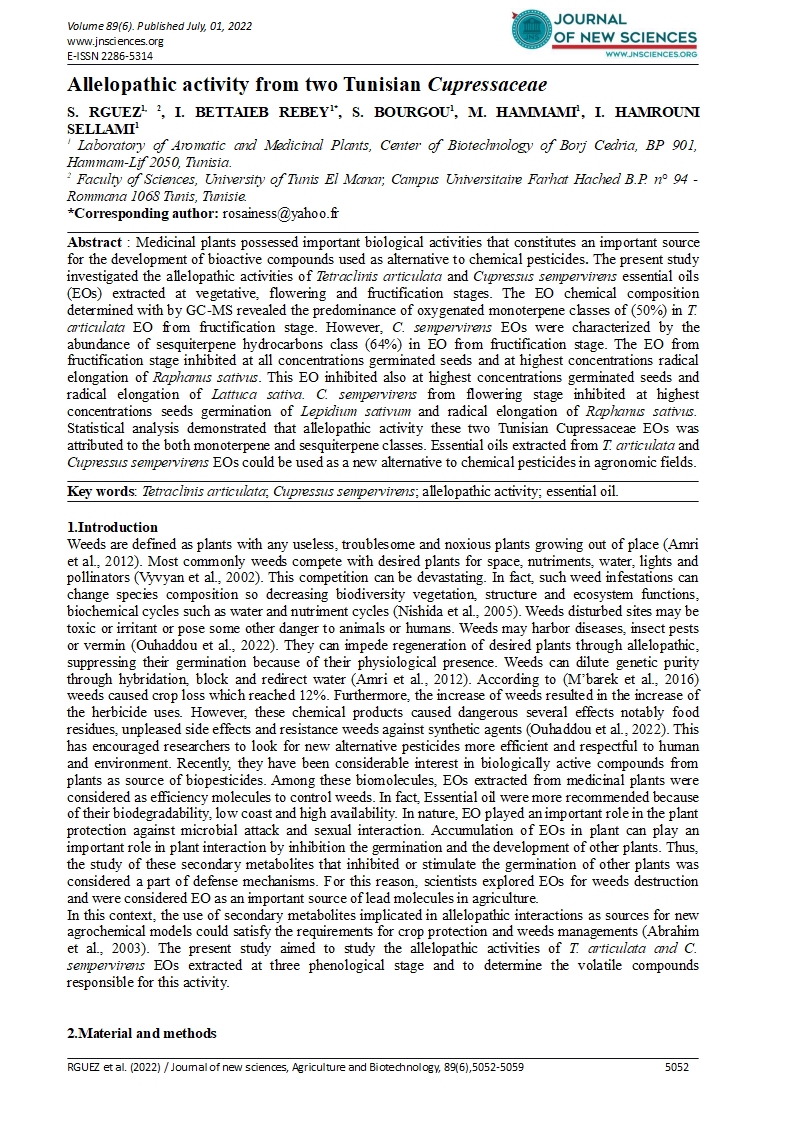

- Category: Volume 89
- Hits: 1073
Allelopathic activity from two Tunisian Cupressaceae
S. RGUEZ1, 2
I. BETTAIEB REBEY1
S. BOURGOU1
M. HAMMAMI1
I. HAMROUNI SELLAMI1
1 Laboratory of Aromatic and Medicinal Plants, Center of Biotechnology of Borj Cedria, BP 901, Hammam-Lif 2050, Tunisia.
2 Faculty of Sciences, University of Tunis El Manar, Campus Universitaire Farhat Hached B.P. n° 94 - Rommana 1068 Tunis, Tunisie.
DOI: https://doi.org/10.55416/sunb.jns01.2207.08906
Abstract : Medicinal plants possessed important biological activities that constitutes an important source for the development of bioactive compounds used as alternative to chemical pesticides. The present study investigated the allelopathic activities of Tetraclinis articulata and Cupressus sempervirens essential oils (EOs) extracted at vegetative, flowering and fructification stages. The EO chemical composition determined with by GC-MS revealed the predominance of oxygenated monoterpene classes of (50%) in T. articulata EO from fructification stage. However, C. sempervirens EOs were characterized by the abundance of sesquiterpene hydrocarbons class (64%) in EO from fructification stage. The EO from fructification stage inhibited at all concentrations germinated seeds and at highest concentrations radical elongation of Raphanus sativus. This EO inhibited also at highest concentrations germinated seeds and radical elongation of Lattuca sativa. C. sempervirens from flowering stage inhibited at highest concentrations seeds germination of Lepidium sativum and radical elongation of Raphanus sativus. Statistical analysis demonstrated that allelopathic activity these two Tunisian Cupressaceae EOs was attributed to the both monoterpene and sesquiterpene classes. Essential oils extracted from T. articulata and Cupressus sempervirens EOs could be used as a new alternative to chemical pesticides in agronomic fields.
Key words: Tetraclinis articulata; Cupressus sempervirens; allelopathic activity; essential oil

